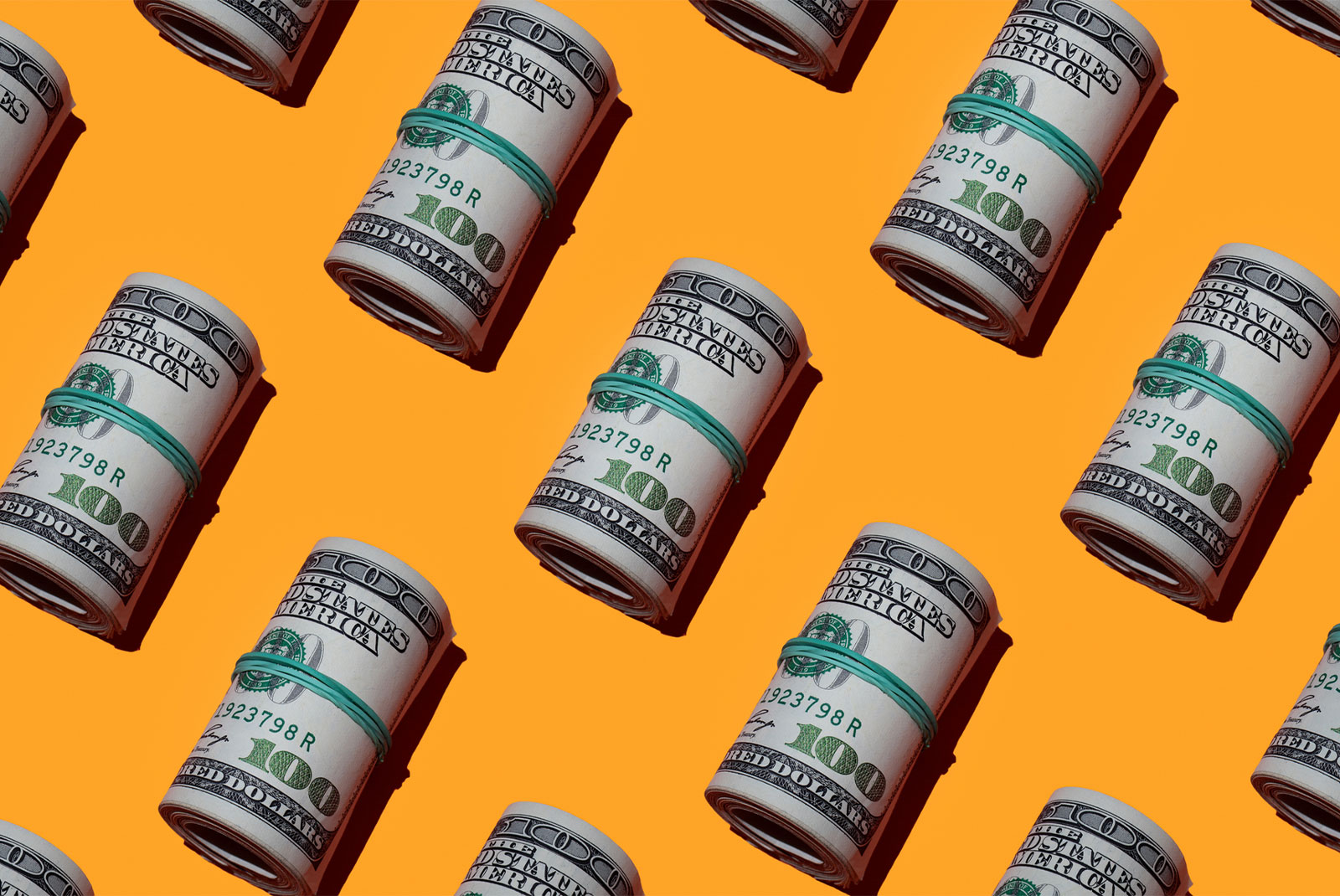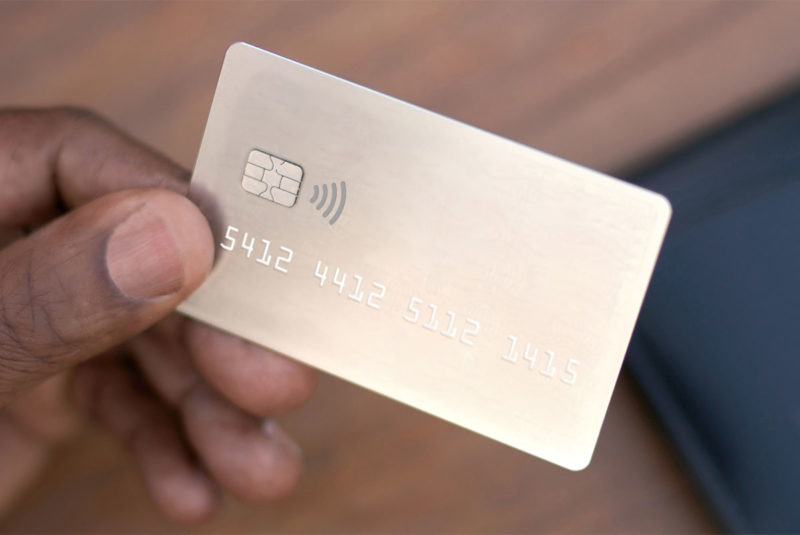A damaged credit history and low credit scores can throw a big wrench into your financial life. It makes it harder (and more expensive) to get a loan or get approved for credit cards. Lenders will likely charge you higher interest rates to borrow money, and it’s likely you won’t be eligible for the credit cards with the best rewards and benefits.
But, if you have bad credit, don’t despair — there are practical ways to reverse your situation and put yourself on track to good credit.
Depending on your situation, you may even be able to skip a step or two. But you’ll want to understand the entire process of repairing credit – if not for your future self, then maybe for someone else.
1. Assess Your Credit Situation
Before working on improving your less-than-ideal credit, you’ll need to figure out why your credit scores dropped in the first place.
Typically, your financial data is collected one of the three big credit reporting agencies – Equifax®, Experian™ and TransUnion®. That information is then used by a credit scoring company that uses a complex algorithm to determine your credit score. The two most common credit scores are your FICO® Score (Fair Isaac Corporation) and the VantageScore®.
But you probably have an idea of what happened. Maybe you missed credit card payments or you missed payments on a personal loan (aka defaulted). At this point in the process, you’ll want to take a holistic and honest look at your financial situation.
Check your credit scores
Your credit card company might offer cardholders free access to their credit scores. If that’s not the case, there are online companies that let you access credit scores by signing up.
Examine your credit reports
Under federal law, you’re allowed one free credit report from each of the three major credit bureaus (Equifax®, Experian™ and TransUnion®) every 12 months. You can get the reports at AnnualCreditReport.com.
While your credit scores offer helpful insight into your financial situation, credit reports provide a detailed picture that should make it easier to spot errors or fraud. Make a list of any negative information you find, including late payments, collection accounts, inquiries and credit cards with balances that are higher than their limits.
This is a valuable opportunity to identify and dispute errors or fraudulent activity that could be hurting your credit scores.
Create a plan of action
Once you’ve looked through your reports and you’ve figured out what needs work, you’re ready for steps 2 – 6.
P.S.: If you think you’ll need help rebuilding your credit, there’s help out there. Consider recruiting a credit counselor. The support and guidance a credit counselor provides could be invaluable as you navigate your debt. To find counseling services near you, the Department of Justice has a list of approved credit counseling agencies.
2. Dispute Inaccurate Information
If you find any inaccuracies while you’re digging through your credit reports, you can dispute them. When you dispute an account, the credit bureau must investigate. If you win the dispute, the credit bureau must delete the item from your credit report.
A deletion could boost your credit scores in certain cases. Even if deleting the item doesn’t give your score a much-needed boost, it’s still worthwhile to remove it because the information on all of your reports should be accurate.
Dispute individual items
Disputing an item on a credit report is relatively straightforward.
Make a list of errors under the applicable credit bureau. For each bureau, you will:
- Send a 609 dispute letter: According to section 609 of the Fair Credit Reporting Act, you have the right to order copies of your credit report and any associated information that appears on it. For this reason, a dispute letter is often referred to as a 609 dispute letter.
To submit a 609 letter, send a certified letter (with a return receipt requested) requesting verification of the information you think is wrong. A dispute doesn’t guarantee a deletion, but it does require the bureau to double-check the disputed item’s accuracy.
You can dispute multiple iterms in the same letter, but you need to send a separate letter to each credit agency. - Wait for a response: The process could take 4 weeks or more. After the investigation, the bureau will remove the disputed item from your credit report if it can’t be verified.
Just in case your dispute doesn’t end the way you’d hoped, there are other avenues to pursue. You can follow up with the bureau, contact the creditor that supplied the data, submit a complaint to the Consumer Financial Protection Bureau or talk to a consumer protection attorney.
If you find accounts you don’t recognize on your credit reports, consider reporting the incident to the Federal Trade Commission.
Here are some measures you can take to help prevent identity theft in the future:
Use credit monitoring
Even if you didn’t find anything wrong in your reports, that doesn’t mean it can’t happen in the future. Credit monitoring services alert you of changes in your credit reports. The alerts may help you identify fraudulent accounts and unauthorized credit access faster. Check if your credit card issuer offers complimentary credit monitoring services.
Lock or freeze your credit
If you’re worried about fraud (and who isn’t these days?), you may opt to freeze your credit reports. When your reports are frozen, creditors can’t access your credit reports until your reports are … unfrozen. This can be a major step toward preventing identity theft and fraud. (FYI: All three credit bureaus must provide credit freezes for free.)
Credit locks are another option. They’re similar to credit freezes but may have more convenient features, like instant locking and unlocking. But, take note: You may have to pay for these features.
3. Pay Down Debts
Paying down your existing debts is one of the most crucial – and simultaneously – challenging steps in the credit repair process. Paying down your debt is usually guaranteed to take a lot of time, effort and (of course) money. But once you downsize your debt, you can start to lay the foundation for future financial stability.
The amount of debt you owe – especially on your credit card(s) – accounts for 30% of your FICO® Scores.
Paying down credit card debt is a very effective way to improve your credit scores, but there are other debt elimination options to consider.
Pay your debts now
Whether you’re up to date on your bills or a little behind on payments, you should consider making a plan to start reducing your balances. Sometimes all you’ll need to do is adjust your budget (or create one) and prioritize your debts differently.
Let’s take credit card balances, for example.
If you’re only making the minimum monthly payment on your cards, it could take years to whittle the balances down to zero. If you can afford it, try paying the entire balance on your cards at the end of the month or paying extra to pay off your balances sooner rather than later.
Consolidate your debt
Managing and paying off a bunch of debts at once can be tough, especially if one or some of them have sky-high interest rates.
With debt consolidation, you package all your bills into a single loan with a single payment. Ideally, your new loan should have a much lower interest rate than what you’d get with most credit cards.
Consolidating credit card debt could give your credit scores a much-needed bump. The balance on an installment loan (think: your consolidation loan) doesn’t impact your credit history the same way a revolving account balance (think: your credit cards) does. The impact on your credit scores will also depend on your ability to repay the consolidation loan and any other bills you have every month.
Debt consolidation is a great way to tackle high-interest debts. But if you choose this route, consider keeping your credit cards open. Shred ‘em, hide ‘em or freeze ’em, but think twice before you close ‘em. The age of your credit card accounts (aka the length of credit history) and the zero balance on the cards may help your credit scores in the long run.
Negotiate with lenders
If you can’t keep up with your loan payments, a lender may be willing to negotiate a more manageable payment plan or arrangement to help you avoid default.
If you’re struggling with your monthly payments, reach out to lenders ASAP to request adjustments that can accommodate your situation. A certified credit counselor may be able to negotiate a debt management plan for you.
Aside from renegotiating the terms of your loan, you may be able to negotiate to settle the debt for less than its total balance. Debt settlement typically requires a large, lump-sum payment upfront, so it can be an expensive option. And unless you’re currently past due, most creditors won’t agree to debt settlement.
Pay your collection accounts carefully
When you don’t pay a debt, your creditors and/or collection agencies may sue you. So, while we get the urgency to pay off your debts and be done with it, you should exercise caution when you’re paying old collection accounts.
See, even one small payment on time-barred debt might restart the collection clock. That one payment could reopen the door to a potential lawsuit for the remaining unpaid balance.
If you plan on settling an old collection account, it’s usually best to wait until you’ve saved the entire amount that’s due first. You may also want to get some advice on how to proceed from a consumer debt attorney.
In terms of your credit scores, even if you settle a collection account, don’t expect an immediate surge in your scores. Unless a lender is using a newer credit scoring model (like FICO 9), paid collection accounts may continue to damage your credit scores as long as the account stays on the reports.
But we have some good news. As collection accounts grow older, they impact your credit less and less, and collection accounts are deleted from credit reports 7 years after the date of default.
4. Learn Responsible Financial Habits
As a result of managing your late bills and high credit card balances, you probably learned a lot from the work you put in to downsize your debts. Those are lessons you shouldn’t forget. Practicing responsible financial habits can help make sure you’re not in the same stress-inducing debt situation again.
Make your payments on time
This piece of advice is a bit obvious, but it’s worth repeating. You should never miss a loan or credit card payment unless you absolutely cannot avoid it. Payment history counts the most in most credit scoring models.
Making minimum payments on your credit cards is technically enough to keep your accounts in good standing, but if you’re committed to making your debt less expensive, we recommend paying the entire balance on your cards so you can avoid added interest.
We’re talking primarily about card purchases, but this could also apply to cash advances and balance transfers, which usually begin accruing interest immediately.
If you don’t have autopay set up and you can afford it, we also recommend setting up autopay for your bills. You won’t have to worry about late payments or missed payments. Just keep an eye on your accounts to confirm the payments are posted.
Late payments aren’t reported to credit bureaus until they’re at least 30 days late, but you may face late fees and/or other consequences. After the 30-day waiting period, the late payment will likely be reported to each credit bureau.
Keep your credit card balances low
Credit utilization (which is the amount of credit you’ve used compared to your credit limit) plays a major role in your credit scores. While the impact may vary depending on the credit reporting method, it’s a good idea to keep your credit utilization ratio below 30%.
If you rack up big credit card charges in a month, as long as you pay down all or most of the balance before the statement closing date, your credit utilization ratio should remain low, and it shouldn’t cause any damage to your scores.
Don’t borrow more than you can afford
You should avoid borrowing so much money or buying so much stuff that you can’t pay it off on time.
Pay off your credit card balances in full every month. And if that’s not possible, try not using your cards while you’re working on rebuilding your credit.
And the same goes for loans. If you don’t feel confident about making your monthly payments, the loan would only hurt, not help.
5. Build New Credit
Once you’ve paid off or renegotiated your old debts, removed inaccurate information from your credit reports and developed a winning strategy to deal with debt in the future, you might be ready to start applying for new credit accounts.
There are several ways to build credit. We’ll guide you through a few options.
Become an authorized user
Ask a trusted friend or family member with a history of on-time payments to add you as an authorized user on their credit card.
You’ll either get a card in the mail or get added to the account, but not receive a card. Typically, the account’s payment history will appear on your credit reports.
Spoiler alert: Some credit card issuers don’t report authorized user accounts to the credit bureaus.
There are eligibility requirements you’ll need to meet to become an authorized user and there is usually no credit check involved.
Open a credit card
There are credit cards you may qualify for with a low credit score. Most of those cards are secured cards.
A secured card account is secured with your money. You make a refundable deposit with a credit card issuer to open an account. You’ll essentially be borrowing from the Bank of You. You may lose out on the usual credit card perks (think: cash back, points or travel rewards), but a secured card can help rebuild your credit.
Applying for a new card (secured or not) always means a hard credit check, which can shave a few points off your credit score, but the impact is usually small.
If you’re worried about the slight dip in your scores, think of it this way: responsible credit card use should boost your credit scores. That boost should make up for any hard inquiry-related drop you experienced at the outset.
Try a credit builder loan
Credit builder loans help you build or repair your credit. You make fixed monthly payments over the life of the loan, but you don’t get the money upfront. You get the money after the loan is paid off. And, usually, you’ll pay a modest amount in interest and fees on the loan.
Credit builder loans can be very useful. They also work well alongside other methods, like secured credit cards. Using an installment loan (think: a credit builder loan) and a revolving credit account (think: a secured credit card) adds to your credit mix (aka credit diversity). Your credit mix accounts for 10% of your credit scores.
6. Practice Responsible Financial Habits and Wait
It’ll take time before the cumulative effect of your new accounts and your debt management strategy show up on your credit reports – but it will happen. The key is to be patient and stick with your financially responsible strategies.
How Fast Can You Repair Bad Credit?
Repairing bad credit doesn’t happen overnight. Depending on your credit issues and the steps you take to fix them, it can take anywhere from months to years. Commit to repairing your credit and don’t be afraid to ask for help – or to consult our guide as many times as you need.
The Short Version
- If you have bad credit, don’t despair — there are practical ways to reverse your situation and put yourself on track to good credit
- While your credit score offers helpful insight into your financial situation, credit reports provide a detailed picture that should make it easier to spot errors or fraud
- Repairing bad credit doesn’t happen overnight. Depending on your credit issues and the steps you take to fix them, it can take anywhere from months to years




